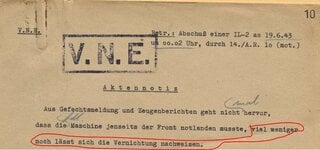an aircraft leaving combat smoking like a Trabant, with a fire, with parts beaking away was considered a victory, it doesn't mean the plane (and pilot) was lost.
This reminds me of a situation on 28 May 1945 over Kanoya.
343 Kokutai N1K2s vs 318 FG P-47Ns
William Loflin's P-47's windshield was covered in oil and his radio was damaged.
(He couldn't have his windshield covered in oil from chasing a smoking enemy aircraft because he wasn't credited with an enemy aircraft shot down and he was forced to disengage immediately from the dogfight giving him no chance to chase enemy aircraft)
Due to this fact and the damaged radio in his cockpit, it was clear he was hit by something.
Since the N1K2s were seen attacking William Loflin and then caused him to disengage, the fact they were credited with shooting down P-47s, and the fact that no one else was credited with a P-47, the 343 Kokutai N1K2s definitely damaged William Loflin's P-47.
To this day no one knows if Loflin's P-47 was scrapped or not.
For me if it was scrapped, then I would consider that a victory because it's been concluded that the P-47 was damaged beyond repair.
If it was repaired, then I would consider it an overclaim since the aircraft isn't destroyed.
Let's just assume it was repaired for argument sake (may not have been)
What do people in this thread consider this if we assume it's repaired?
Victory or Overclaim?
For me it's overclaim



